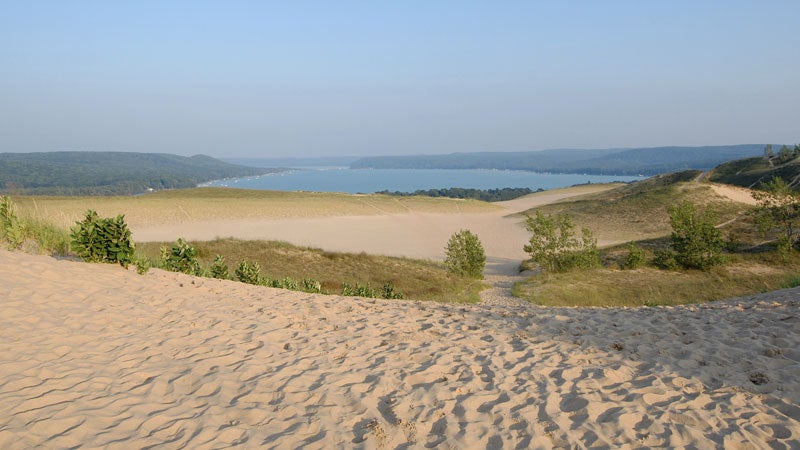Our current Congress isn’t exactly known for legislative efficiency, especially when it comes to the environment. Since the 1964 passage of the Wilderness Act, every Congress has designated at least one area to become a national park or monument—that is, until President Obama took office.
But, , that changed yesterday. The House voted unanimously(!) to protect 32,500 acres of Michigan’s Sleeping Bear Dunes National Lakeshore, approving a bill the Senate gave the green light to last June. For the first time in five years, Congress passed a wilderness bill.
The dunes span 35 miles of Lake Michigan’s coastline on Michigan’s northern lower peninsula, near Traverse City. The area features 450-foot-high bluffs, historic sites, and opportunities for hunting and fishing.
, the Sleeping Bear Dunes’ history spans from early Native American cultures to more recent commerce along the Great Lakes. In the 19th century, the nearby Manitou Passage served as an important route for commercial shipping, but unpredictable weather and sand shoals made the region dangerous for ships. During the winter of 1870–71, 214 people perished in shipwrecks near the dunes.
That’s why the coastline has several lighthouses. Today, the South Manitou Island lighthouse is open for tours.
Until this recent congressional action, President Obama used authority granted to him by the 1906 Antiquities Act to protect important American regions. The administration would like to preserve two more areas using this method: New Mexico’s 500,000-acre Organ Mountains-Desert Peaks area and California’s 1,600-acre Point Arena-Stornetta Public Lands.


